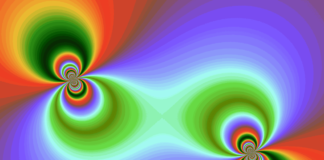Latent space is a concept used in various fields, including machine learning, computer vision, and data analysis. It refers to a space where data points are represented in a compressed and abstract form, enabling efficient manipulation, analysis, and generation of data. In the context of machine learning, latent space is often associated with techniques like autoencoders and generative models. By learning a lower-dimensional latent space representation, these models can capture important features and patterns within the data. In this article, we will explore the concept of latent space in more detail, discussing its applications, properties, and benefits.
In the field of machine learning, latent space refers to a lower-dimensional representation of the input data. The latent space is typically constructed in such a way that it captures the underlying structure and variations present in the data. By mapping data points from a higher-dimensional input space to a lower-dimensional latent space, it becomes easier to analyze and manipulate the data. This compression of information into a lower-dimensional space is often achieved through techniques like dimensionality reduction, neural networks, and probabilistic modeling.
One of the most common methods for learning the latent space representation is through the use of autoencoders. An autoencoder is a type of neural network architecture that is designed to learn an efficient representation of the input data. It consists of an encoder network that maps the input data to a latent space representation and a decoder network that reconstructs the input data from the latent representation. During training, the autoencoder is trained to minimize the reconstruction error, which encourages the model to learn a meaningful and compact representation in the latent space.
By learning a latent space representation, autoencoders can perform various tasks such as data compression, denoising, and anomaly detection. For example, in image compression, an autoencoder can learn a compressed representation of images in the latent space, allowing for efficient storage and transmission of data. Similarly, in anomaly detection, an autoencoder can learn to reconstruct normal instances of data accurately, and any deviation from the learned representation can indicate an anomaly.
Another important application of latent space is in generative models, such as variational autoencoders (VAEs) and generative adversarial networks (GANs). These models learn to generate new data samples by sampling from the latent space and decoding them into the original data domain. By exploring the latent space, generative models can generate diverse and realistic samples that exhibit similar patterns and characteristics as the training data. For example, in image generation, a VAE or GAN can learn a latent space representation of images and generate new images by sampling from this latent space.
The properties of the latent space are crucial in determining the quality and usefulness of the learned representation. Ideally, a good latent space should possess the following properties:
1. Continuity: A meaningful latent space should exhibit continuity, meaning that nearby points in the latent space should correspond to similar points in the data space. This property enables smooth interpolation and manipulation of data samples by navigating through the latent space.
2. Disentanglement: A desirable property of the latent space is disentanglement, where different factors of variation in the data are encoded in separate dimensions of the latent space. For example, in the case of face images, the latent space should ideally have dimensions that correspond to different facial attributes like gender, age, and facial expressions.
3. Generalization: A good latent space should generalize well to unseen data samples. It should capture the essential features and patterns of the data distribution and be able to generate realistic and diverse samples that are similar to the training data.
4. Compactness: The latent space should be compact, meaning that it should capture the important information in a lower-dimensional representation. This property enables efficient storage, manipulation, and analysis of data, making it easier to work with large datasets.
5. Separability: The latent space should be separable, meaning that different classes or categories of data points are well-separated in the latent space. This property facilitates tasks such as classification, clustering, and data exploration, as it allows for distinct regions in the latent space to correspond to different data categories.
These properties of the latent space are crucial for various applications in machine learning and data analysis. Now, let’s delve deeper into each of these properties and their significance:
The continuity property ensures that nearby points in the latent space correspond to similar points in the data space. This property enables smooth interpolation and manipulation of data samples by traversing the latent space. For example, in the context of image generation, if we have a generative model trained on face images, we can smoothly transition between different facial attributes like age, gender, and expressions by interpolating between the corresponding points in the latent space. Continuity in the latent space allows for intuitive and seamless data manipulation.
Disentanglement: Disentanglement refers to the property of the latent space where different factors of variation in the data are encoded in separate dimensions. In an ideal disentangled latent space, each dimension corresponds to a specific attribute or feature. For example, in the case of face images, one dimension might represent the gender, another dimension might represent the age, and so on. Disentanglement allows for explicit control over specific features during data generation or manipulation. It also facilitates better interpretability and understanding of the underlying factors driving the data.
Generalization: Generalization refers to the ability of the latent space to capture essential features and patterns of the data distribution. A good latent space should be able to generalize well to unseen data samples and produce realistic and diverse outputs. This property is particularly important in generative models, as they need to generate novel samples that resemble the training data. If the latent space has captured the salient features of the data distribution, it becomes easier to generate high-quality samples that are representative of the underlying data.
Compactness: The compactness property of the latent space refers to its ability to capture the essential information in a lower-dimensional representation. By reducing the dimensionality of the data, the latent space allows for more efficient storage, manipulation, and analysis of the data. This becomes particularly valuable when working with large datasets or computationally expensive models. Compactness also enables better visualization of the data by projecting it onto a lower-dimensional space, making it easier to explore and understand the data distribution.
Separability: The separability property of the latent space implies that different classes or categories of data points are well-separated in the latent space. This property has significant implications for tasks like classification, clustering, and data exploration. When the latent space exhibits good separability, it becomes easier to discriminate between different classes or clusters of data points. This enables efficient classification of new data samples based on their latent space representation. Additionally, the separability property facilitates data exploration by allowing users to navigate the latent space and discover distinct regions corresponding to different categories or clusters of data.
Latent space is a lower-dimensional representation of the data that captures important features and patterns. Autoencoders, variational autoencoders (VAEs), and generative adversarial networks (GANs) are commonly used to learn the latent space representation. The properties of the latent space, including continuity, disentanglement, generalization, compactness, and separability, play crucial roles in various machine learning and data analysis tasks. Understanding and harnessing these properties enable researchers and practitioners to develop more efficient and effective models for data compression, generation, manipulation, and exploration.
Furthermore, the concept of latent space extends beyond the realm of machine learning and finds applications in other fields as well. For instance, in computer vision, latent space can be used for image and video analysis, where the lower-dimensional representation allows for efficient processing and recognition tasks. Similarly, in natural language processing, latent space models can capture semantic and syntactic structures of text, enabling tasks such as sentiment analysis, text generation, and machine translation.
One of the notable advantages of latent space models is their ability to learn abstract representations of the data. By compressing the data into a lower-dimensional latent space, irrelevant and noisy features can be filtered out, leading to a more concise and meaningful representation. This abstraction enables the discovery of underlying structures and patterns that might not be immediately apparent in the original data. It also allows for better generalization to unseen data samples, as the learned latent space can capture the essential characteristics of the data distribution.
Latent space models also offer opportunities for data generation and exploration. With generative models like VAEs and GANs, it is possible to generate new data samples by sampling from the latent space. By traversing the latent space, one can explore the range of possibilities encoded within it and gain insights into the data manifold. This capability is particularly valuable in creative applications, such as generating realistic images, music, or text, as well as in data augmentation for training machine learning models.
In addition to its applications in modeling and analysis, latent space can be leveraged for transfer learning. By training a model to learn a latent space representation on one dataset, the knowledge acquired in the latent space can be transferred to other related tasks or datasets. This transferability allows for more efficient training and better performance, especially when labeled data is scarce. Instead of learning the representation from scratch, the model can leverage the pre-learned latent space and focus on adapting to the specific task at hand. This approach has been successfully applied in various domains, including computer vision, natural language processing, and speech recognition.
Despite the benefits and potential of latent space models, there are challenges and considerations that need to be addressed. One challenge is the interpretability of the latent space representation. While a good latent space should capture meaningful and disentangled features, understanding the exact mapping between the dimensions of the latent space and the original data attributes can be difficult. Interpretability becomes particularly important when deploying latent space models in sensitive domains or applications where transparency and accountability are crucial.
Another consideration is the trade-off between the dimensionality of the latent space and the expressiveness of the model. A smaller latent space dimensionality may lead to a more compact representation but could also result in information loss and limited modeling capacity. On the other hand, a larger latent space dimensionality increases the expressiveness of the model but may require more data and computational resources. Determining the appropriate dimensionality of the latent space is often an empirical process that depends on the specific dataset and task.
In conclusion, latent space is a powerful concept that enables efficient representation, manipulation, and generation of data. Through techniques like autoencoders, VAEs, and GANs, it is possible to learn lower-dimensional representations that capture important features and patterns in the data. The properties of the latent space, including continuity, disentanglement, generalization, compactness, and separability, play a crucial role in determining the quality and usefulness of the learned representation. Latent space models have diverse applications in machine learning, computer vision, natural language processing, and beyond, and continue to be an active area of research and innovation. By harnessing the potential of latent space, we can unlock new possibilities for data analysis, modeling, and exploration in the pursuit of advancing AI and understanding complex datasets.














